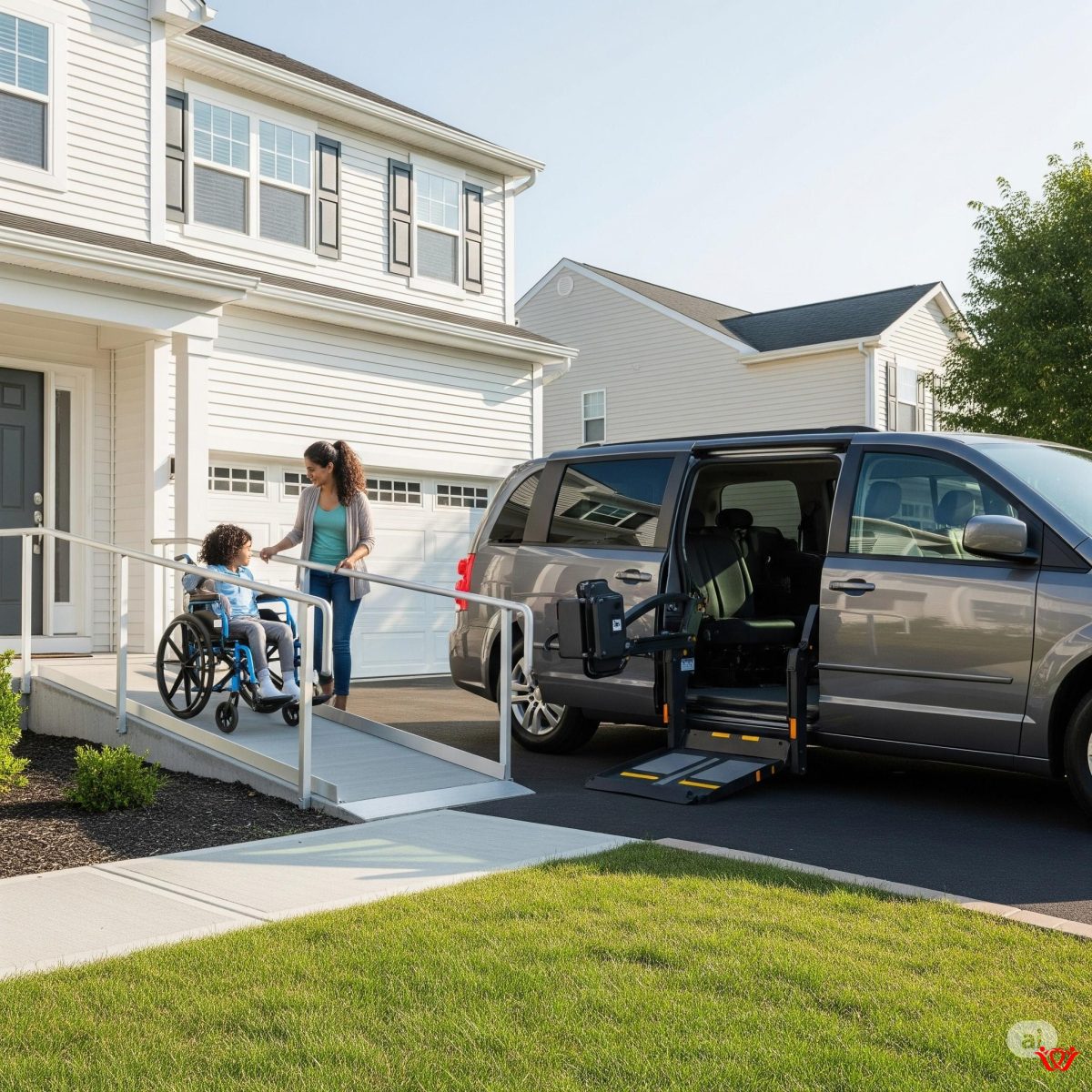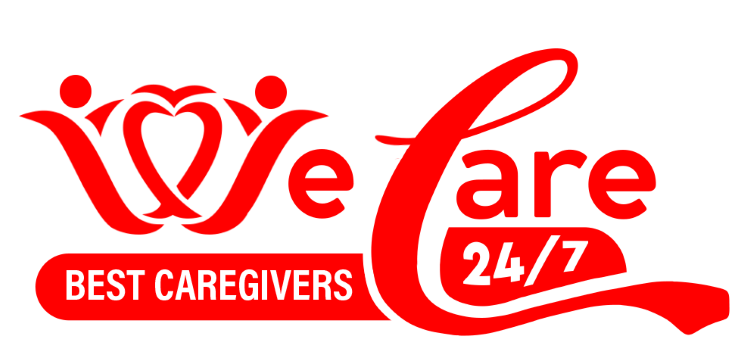8 Practical Home & Vehicle Modifications for NJ Kids with Disabilities: Enhancing Accessibility and Independence

When a child in New Jersey lives with a disability, families often seek ways to create an environment that promotes their independence, comfort, and safety. Modifying homes and vehicles can significantly enhance a child’s ability to navigate their surroundings, participate in daily activities, and experience greater freedom. These adjustments are not just about compliance; they are about fostering a more inclusive and supportive lifestyle for your loved one.
At WeCare Home Caregivers, we understand the unique challenges and opportunities that arise when caring for individuals with disabilities in New Jersey. While our primary focus is providing compassionate in-home care, we recognize that a safe and accessible environment is foundational to well-being. This guide explores eight practical home and vehicle modifications that can make a tangible difference for children with disabilities and their families across the Garden State.
Creating an Accessible Home Environment in New Jersey
A child’s home should be their sanctuary, a place where they feel secure and empowered. Thoughtful modifications can transform living spaces, making them more navigable and functional. Here are four key home adaptations to consider for your New Jersey residence.
1. Ramps and No-Step Entries
For children who use wheelchairs, walkers, or have difficulty with stairs, ramps are an essential modification. Both exterior and interior ramps can eliminate barriers, allowing for smooth transitions between different levels or into and out of the home. Consider the slope and surface material to ensure safety, especially in New Jersey’s varied weather conditions.
Portable ramps offer flexibility for temporary needs or travel, while permanent ramps, often made of wood, concrete, or aluminum, provide a stable, long-term solution. Many New Jersey contractors specialize in accessible home modifications and can help design a ramp that meets ADA guidelines and blends seamlessly with your home’s aesthetics.
2. Wider Doorways and Hallways
Standard doorways (typically 28-32 inches wide) and hallways can be challenging for wheelchairs, power chairs, and even some walkers. Widening doorways to at least 36 inches provides ample clearance, preventing damage to walls and making movement much easier and safer for a child with mobility challenges. This modification often involves relocating existing door frames and can greatly reduce frustration.
Similarly, ensuring hallways are wide enough allows for comfortable maneuvering. This might involve minor structural adjustments or simply reorganizing furniture to create clear pathways. These changes contribute significantly to a child’s autonomy within their home, reducing the need for assistance and promoting independent movement.
3. Accessible Bathroom Modifications
The bathroom is one of the most common areas requiring modification for accessibility. Simple adjustments can make a profound impact on a child’s hygiene and privacy. Key modifications include:
- Roll-In Showers: Eliminating a curb allows a wheelchair or shower chair to roll directly into the shower, providing a safer and more independent bathing experience.
- Grab Bars: Strategically placed grab bars near toilets and in showers offer stability and support, preventing falls. They are available in various styles and finishes to match your bathroom decor.
- Lowered or Pedestal Sinks: Installing a sink that allows for wheelchair access underneath, or choosing a pedestal sink, provides comfortable access for handwashing and personal care.
- Raised Toilets or Toilet Seat Risers: Adjusting toilet height can make transferring on and off much easier for children with certain mobility limitations.
These modifications enhance safety and provide a greater sense of dignity for a child managing personal care routines. Many New Jersey plumbing and renovation companies specialize in accessible bathroom design, ensuring modifications meet specific needs and local building codes.
4. Smart Home Technology for Control and Safety
Modern smart home technology offers innovative solutions for children with disabilities, empowering them to control their environment with ease. Voice-activated systems, smartphone apps, or switch-based controls can manage various functions, fostering independence and enhancing safety.
Examples include automated lighting systems, smart thermostats, remote-controlled door locks, and even voice-activated entertainment systems. For children with limited dexterity, these technologies can be life-changing, allowing them to adjust their surroundings without physical strain or assistance. Integrating smart security features, such as remote monitoring cameras, can also provide peace of mind for parents and caregivers.
Adapting Vehicles for Enhanced Mobility in New Jersey
Beyond the home, accessible transportation is vital for a child’s participation in school, therapies, and community activities. Vehicle modifications ensure safe and comfortable travel, opening up a world of opportunities. Here are four essential vehicle adaptations for families in New Jersey.
5. Vehicle Ramps, Lifts, and Lowered Floors
The primary challenge for wheelchair users in vehicles is entry and exit. Vehicle ramps and lifts provide practical solutions for overcoming this barrier. Ramps can be manually deployed or power-operated, extending from the vehicle to the ground. Lifts, often hydraulic or electric, raise and lower a wheelchair directly into the vehicle.
Minivans with lowered floors are a popular option, as they increase interior head clearance and reduce the angle of the ramp, making transfers smoother. These modifications are generally performed by specialized vehicle conversion companies, many of which operate within or serve the New Jersey area, ensuring proper installation and safety compliance.
6. Securement Systems and Accessible Seating
Once inside the vehicle, ensuring the child and their mobility device are securely fastened is paramount for safety during travel. Wheelchair securement systems, often consisting of four tie-down straps, lock the wheelchair firmly to the vehicle floor, preventing movement during acceleration, braking, or turns. Additionally, specialized seat belts or harness systems are available to secure the child within their wheelchair.
Accessible seating options, such as swivel seats or transfer seats, can also facilitate easier transfers from a wheelchair to a vehicle seat. These modifications ensure that a child remains safe and comfortable, minimizing the risk of injury during transport, which is especially important for New Jersey families traveling on busy highways or local roads.
7. Power-Assisted Doors and Tailgates
For parents or caregivers assisting a child with disabilities, managing heavy doors or tailgates can be physically demanding, especially while simultaneously managing a wheelchair or other equipment. Power-assisted doors, common on accessible minivans, open and close with the touch of a button or a remote control, making loading and unloading significantly easier.
Similarly, power tailgates can simplify access to the cargo area for storing mobility devices or other equipment. These features reduce physical strain for caregivers and expedite the process of getting a child into or out of the vehicle, which can be particularly beneficial during medical appointments or inclement weather.
8. Modified Controls for Drivers and Passengers
While often associated with adaptive driving for adults, some vehicle modifications cater to the comfort and safety of children as passengers, or assist caregivers in operating the vehicle. For example, extended reach controls for power windows or climate settings can be beneficial if the child has some upper body mobility but struggles to reach standard controls.
For parents or caregivers, ergonomic modifications to the driver’s seat or pedal extensions might alleviate strain if they frequently assist with transfers or operate adaptive equipment. These types of adjustments, while sometimes subtle, can contribute to a more positive and less stressful transportation experience for everyone involved.
Funding and Support for Modifications in New Jersey
The cost of home and vehicle modifications can be a significant concern for New Jersey families. Fortunately, various resources and programs are available to help. The New Jersey Division of Developmental Disabilities (DDD) offers services and supports that may include environmental modifications. Additionally, Medicaid waivers, such as the Community Care Program (CCP), can sometimes cover specific home modifications.
Non-profit organizations, grants, and specialized loan programs are also potential avenues for financial assistance. It is highly recommended to consult with a financial advisor or a social worker familiar with disability services in New Jersey to explore all available funding options. Many families also find success through crowd-funding campaigns or community initiatives.
The WeCare Home Caregivers Difference
At WeCare Home Caregivers, we recognize that comprehensive care extends beyond personal assistance. It encompasses creating an environment where individuals can thrive. While we do not perform modifications ourselves, we are committed to helping New Jersey families navigate the complexities of care, offering support and guidance in various aspects of daily living. Our compassionate caregivers can assist with daily routines within an accessible home, ensuring your child receives the dignified and personalized support they need.
Investing in home and vehicle modifications is an investment in your child’s independence, safety, and overall quality of life. These practical changes can transform challenges into opportunities, allowing children with disabilities to participate more fully in their homes and communities across New Jersey. We encourage you to explore these options and connect with local professionals who can bring these valuable enhancements to your family’s life.



